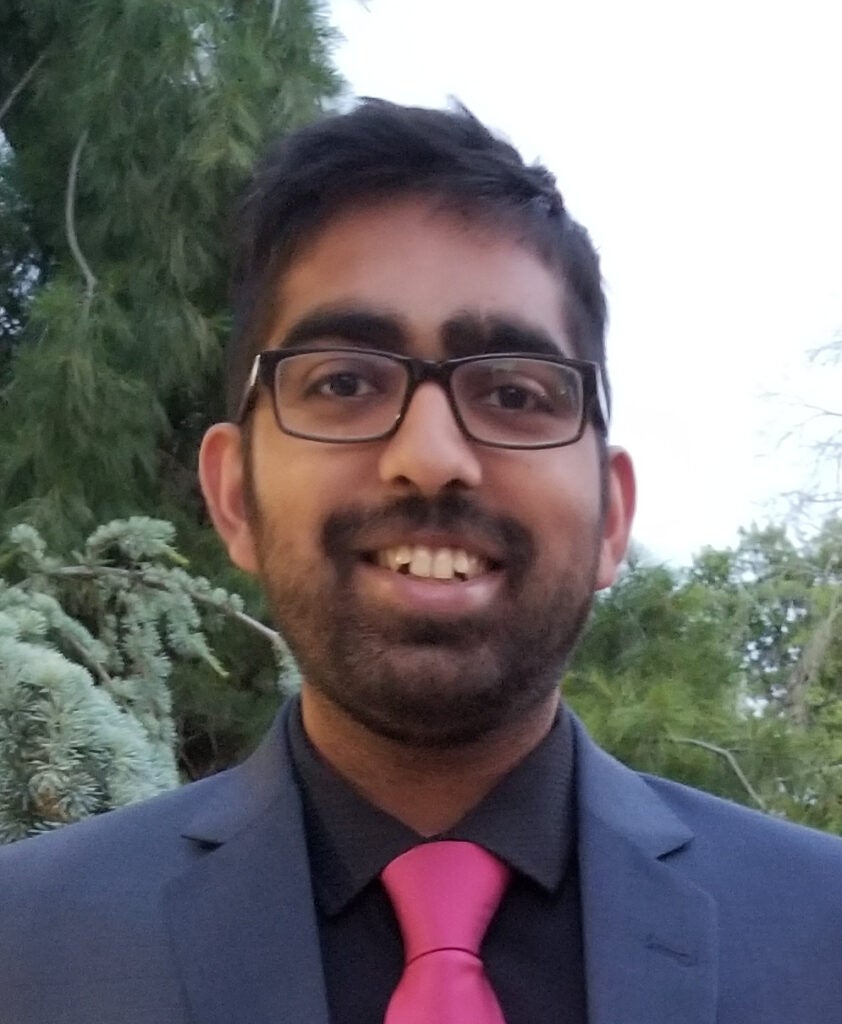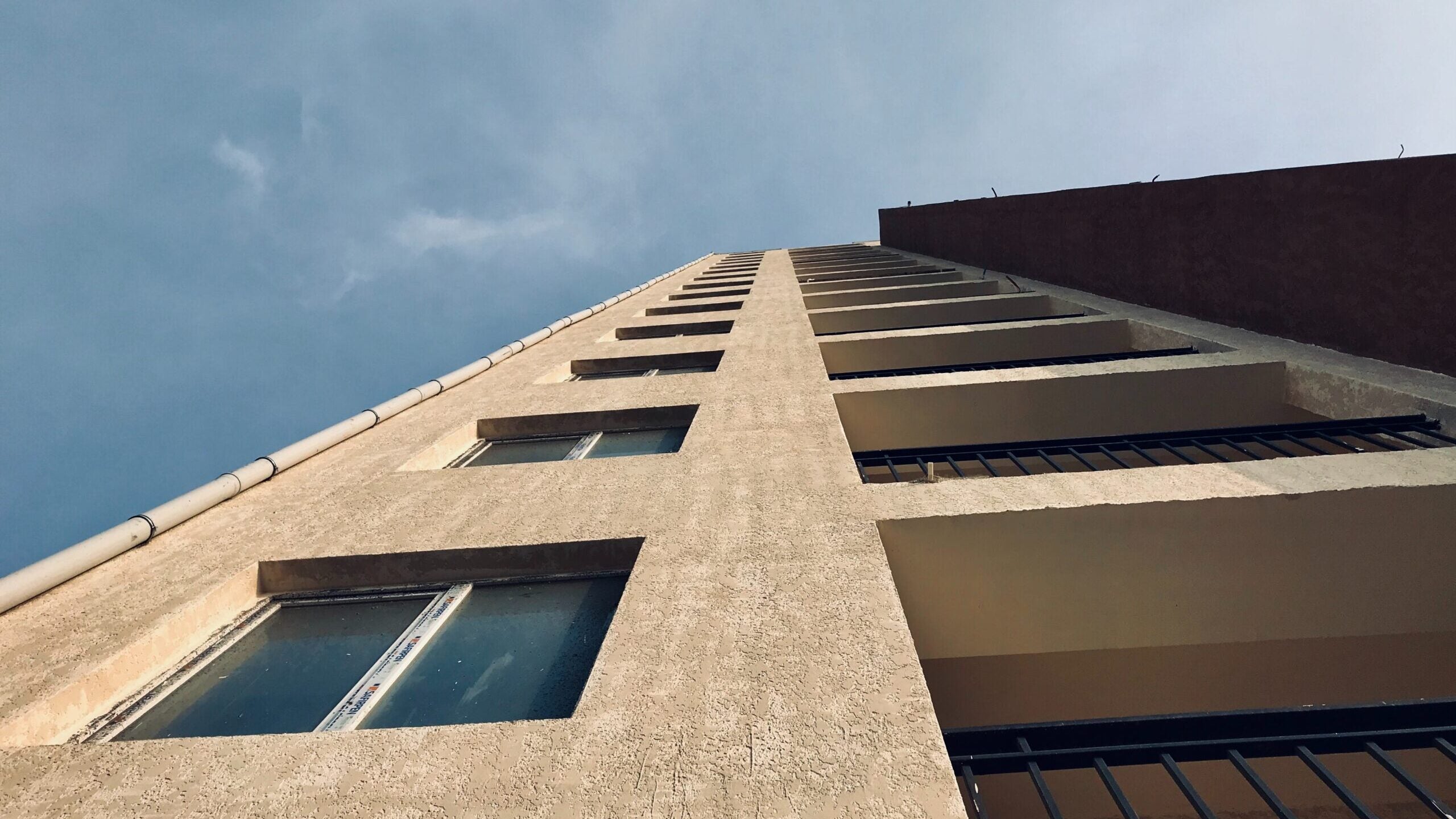First-of-Its-Kind Research by Physics Professor and Graduate Student Lays Foundations for Future Studies on Sustainable Concrete
In a recent paper published in Science Advances, Emanuela Del Gado, Ph.D. and a professor in the Department of Physics and post-doctoral researcher Abhay Goyal create a novel model for studying the cohesive strength of cement in the hopes of creating greener infrastructure.
“Cement production is responsible for significant amounts of man-made greenhouse gases—in fact if the cement industry were a country, it would be the third largest emitter in the world,” says Del Gado. “It has become clear that even a slight reduction of cement carbon footprint will dramatically reduce the global anthropogenic CO2 emissions of the whole construction sector and that meeting emission-reduction targets for new constructions calls for deeper scientific understanding of cement properties and performance.”
A Concrete Concept

A computational physicist, Del Gado’s research interests focus on understanding how materials turn from liquid into solid. She is particularly interested in concrete because though it is generally thought of as an immovable solid, concrete is actually an amorphous solid similar to plastic, meaning that it’s subatomic structure is not crystalline.
The physicist explains that this is true for the majority of materials that are used in everyday life.
“In my work I attempt to understand how disordered solids form and how we can understand their mechanical properties because most of the theoretical understanding that we have in physics is limited to crystalline structures,” Del Gado explains. “Many questions about how to improve sustainability in industrial processing of materials are due to our partial understanding of amorphous materials.”
Cement is made from an artificial powder of calcium silicate that acts as a binding agent when mixed with water, rocks and sand to form concrete. The water in this mixture reacts with the calcium silicate powder to produce calcium-silicate-hydrate (C-S-H), which functions as a glue that binds together the other materials through like-charge attraction.
Del Gado says that understanding why the C-S-H bonds together in this way is key to understanding how to find alternatives to the current cement powder as the process of making cement for concrete is carbon dioxide intensive.
“Since the calcium silicate used for cement does not occur naturally, other minerals that contain calcium such as calcium carbonate, or limestone, have to be burned at very high temperatures in order to manufacture the powder, which produces a huge amount of CO2,” says Del Gado. “In our research, we have found the key of how the nature of the hardness of cement is very specific to calcium ions and what could be the ingredients needed to substitute calcium ions with others such as magnesium, for example.”
Analyzing Ions

In their paper, Del Gado and Goyal have provided a new way to not only understand this ion specificity, but have also provided an explanation of why these cohesive forces are so strong. The structuring of confined ions and water leads to the strongly attractive forces between C-S-H surfaces and is thus the source of the mechanical strength of concrete.
The complexity of the problem required an interdisciplinary team. Del Gado and Goyal worked together with civil engineers, theoretical physicists and physical chemists in the United States and France to achieve their goal.
They developed a method to calculate which ions could work as a calcium replacement, which led to a new understanding of how both ions and water behave when strongly confined. This was the first time that the role of water in this process was addressed in a paper.
“Ultimately, controlling and modifying these nanoscale processes is necessary to reduce the immense carbon footprint of cement production, but the scientific understanding of these phenomena was incomplete, which motivated the research project in question,” says Goyal, first author of the paper.
The researchers will use the new tools in future experiments to study different ions being used in more realistic conditions and predict how they will behave in infrastructure.
Goyal, who joined Del Gado’s research group in 2016 as a graduate student, completed this paper as the culmination of his thesis work and hopes to build on its findings for his National Institute of Standards and Technology fellowship to develop modelling approaches for cement and concrete 3D printing.
“None of this would have been possible without the guidance and mentorship of Emanuela, especially in the moments where I was entrenched in technical challenges and it all seemed hopelessly difficult,” says Goyal. “She has always pushed me to think about problems in new ways and encouraged me to ask my own scientific questions.”
-by Shelby Roller (G’19)
